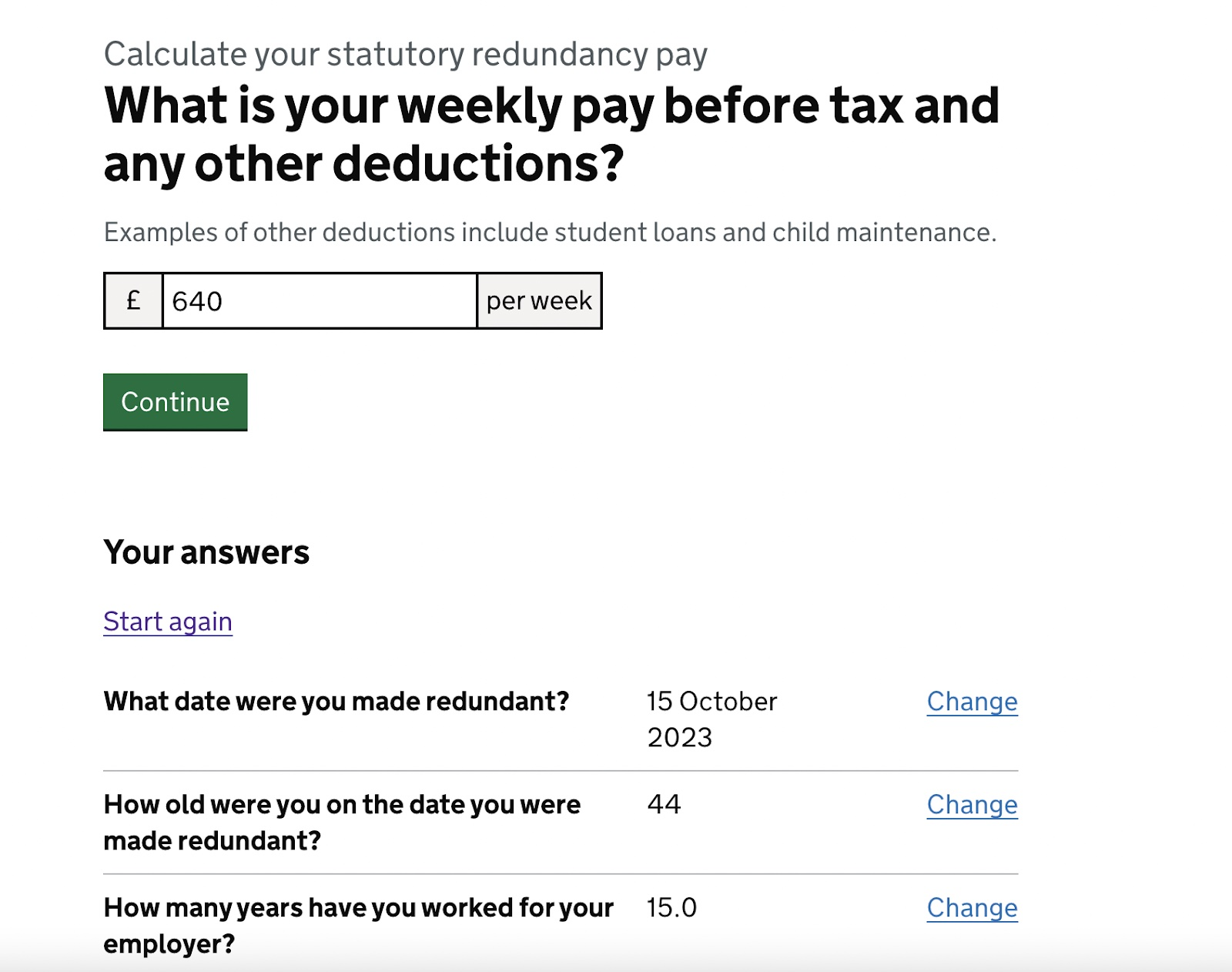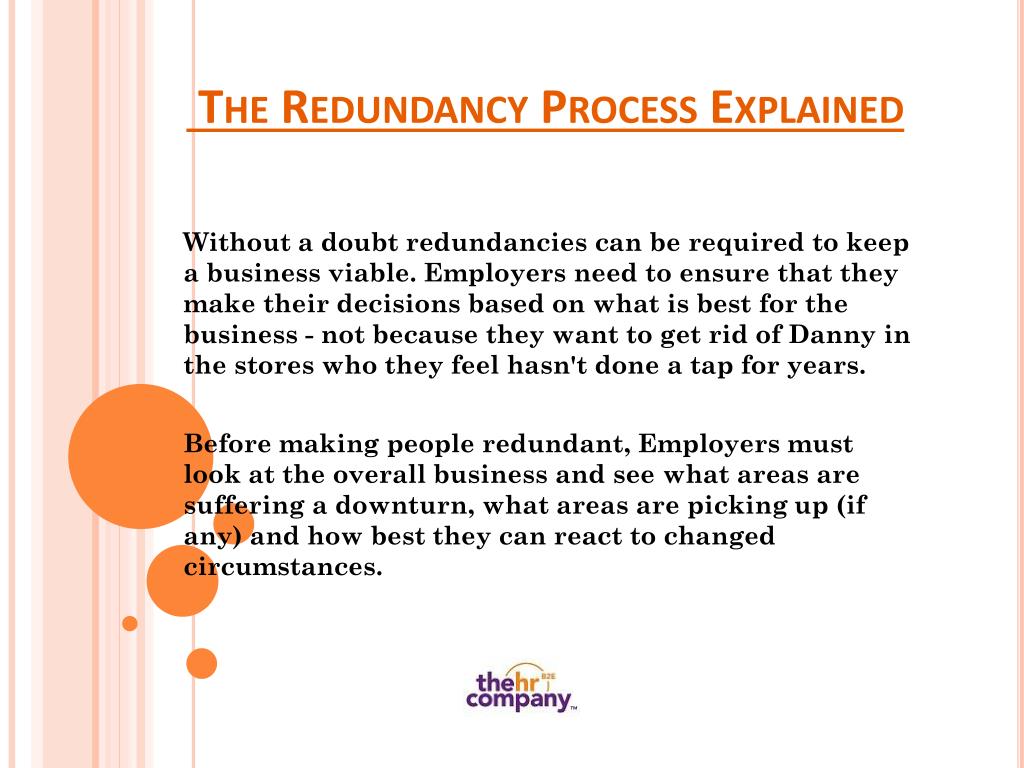Who Pays Redundancy Money? A Comprehensive Guide for Employers and Employees
Who Pays Redundancy Money? A Comprehensive Guide for Employers and Employees
Blog Article
Investigating the Interaction Between Company Redundancy and Business Versatility for Future Growth
In the vibrant landscape of today's business globe, the elaborate relationship in between company redundancy and business adaptability arises as a vital aspect for sustained development and success. Companies frequently encounter the challenge of striking a delicate equilibrium in between keeping a level of redundancy to reduce threats and promoting adaptability to react quickly to the ever-evolving market needs. This delicate interaction holds the key to not just enduring in rough times yet also growing in the face of unpredictability. As we discover the multifaceted measurements of this interaction, intriguing insights right into just how organizations navigate these intricacies to lead the way for future growth wait for.
Significance of Business Redundancy
Business redundancy is a vital component that boosts business strength and minimizes functional threats. By including redundancy measures within the business structure, firms can much better hold up against unforeseen disruptions and fluctuations in business environment. Redundancy acts as a strategic barrier, permitting firms to adjust and respond efficiently to unforeseen challenges without compromising essential operations.
One trick facet of the relevance of firm redundancy is its function in making sure continuity during times of crisis. When encountered with abrupt adjustments or emergency situations, redundant systems, sources, or employees can tip in to preserve essential functions and protect against prevalent interruptions. This continuity not just safeguards the firm's track record and client trust yet likewise lessens financial losses and functional downtime.

Techniques for Business Flexibility

Another critical technique is spending in modern technology and framework that can support flexibility and scalability. Implementing electronic devices, automation, and information analytics can simplify procedures, improve efficiency, and offer important understandings for notified decision-making. In addition, creating adaptable organizational structures that enable for quick modifications to market dynamics and client requirements is vital for staying affordable in a quickly progressing atmosphere. By proactively determining prospective interruptions and chances, organizations can proactively adapt and flourish in an ever-changing business landscape.
Balancing Redundancy and Flexibility
Achieving a harmonious equilibrium between functional redundancy and business adaptability is vital in navigating the intricacies of a dynamic service setting. Striking the best balance between redundancy and versatility is a delicate procedure that needs a deep understanding of the company's goals, sector dynamics, and risk resistance.
To attain this equilibrium, firms require to conduct regular evaluations of their procedures to recognize locations where redundancy is essential for threat reduction and where flexibility can drive technology and development. Applying adaptable frameworks, fostering a culture of continuous learning and improvement, and encouraging open communication throughout all degrees of the company are crucial methods to balance redundancy and adaptability efficiently. By straightening these 2 critical components, firms can position themselves for sustainable growth and useful source success in an ever-changing organization landscape.
Study on Adaptation Success
In taking a look at instances of effective organizational adaptation, it comes to be noticeable that the interaction between functional redundancy and flexibility is a defining factor in forming durable companies. One engaging situation research is that of official statement Netflix. At first a DVD rental service, Netflix showed exceptional adaptability by transitioning right into a streaming platform when digitalization disrupted the sector. By tactically buying innovation and content production, Netflix not only grew however survived in a quickly evolving market. An additional standout example is Amazon. Beginning as an online book shop, Amazon continuously adjusted its business design, expanding into varied industries such as cloud computer and synthetic knowledge. This flexibility enabled Amazon to remain ahead of rivals and meet altering customer demands. Finally, Adobe provides a notable image of successful adjustment. The company moved from marketing software application licenses to a subscription-based version, ensuring persisting revenue streams and enhanced client involvement. These case research studies emphasize the significance of operational redundancy combined with business flexibility in fostering long-lasting development and competition.
Structure Strength for Future Development
Structure strength for future development calls for a critical alignment of functional procedures with market characteristics and arising patterns. Business need to adjust to altering atmospheres by promoting a society of versatility, advancement, and constant enhancement. Resilience includes not only recovering from setbacks yet additionally proactively planning for future obstacles. One vital facet of structure strength is spending in durable danger management methods to alleviate prospective interruptions. This includes scenario planning, expanding supply chains, and establishing backup prepare for numerous backups (who pays redundancy money).
Furthermore, promoting solid partnerships with stakeholders, such as consumers, workers, providers, and the area, is essential for preserving and weathering unpredictabilities trust fund and support throughout stormy times. Efficient communication and transparency play an essential function in structure durability, as they help line up expectations and assist in partnership in navigating uncertainties.
In addition, organizations require to prioritize discovering and growth efforts to upskill workers and outfit them with the needed devices to adjust to changing scenarios. By buying their labor force, companies can boost their adaptability and agility, ultimately enhancing their resilience for lasting future growth.
Conclusion

In the dynamic landscape of today's service globe, the elaborate partnership between firm redundancy and organizational versatility arises as an important variable for sustained development and success. Firms typically encounter the challenge of striking a fragile equilibrium between preserving a degree of redundancy to mitigate dangers and cultivating adaptability to respond quickly to the ever-evolving market needs.To achieve this balance, business require to conduct regular evaluations of their procedures to identify areas where redundancy is needed for threat reduction and where adaptability can drive advancement and development.In verdict, the interaction between company redundancy and organizational versatility is critical for future growth. Building resilience with a combination of redundancy and versatility will certainly make certain that companies are prepared for the challenges of the future.
Report this page